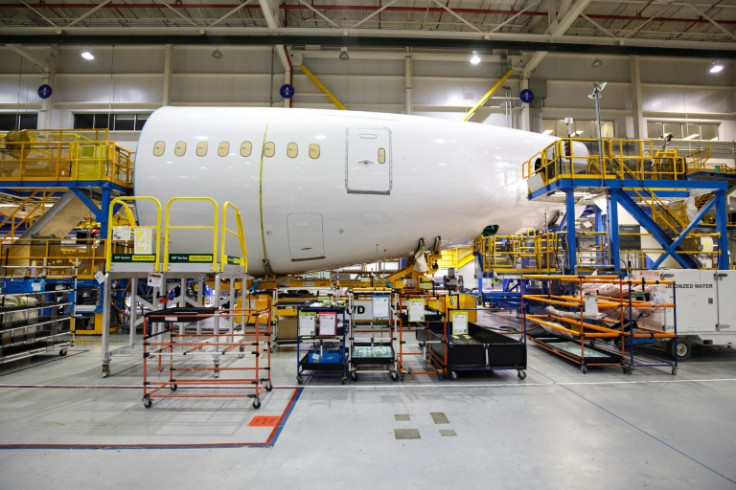
Boeing is expected to deliver on Thursday a "comprehensive action plan" required by US air safety regulators after a near-catastrophic incident in January.
The American aeronautics giant has faced intense scrutiny following manufacturing problems and pointed testimonials from whistleblowers in the aftermath of fatal crashes in 2018 and 2019 that have kept the company in the headlines for unwanted reasons.
On January 5 a Boeing 737 MAX 9 operated by Alaska Airlines made an emergency landing after a fuselage panel blew out mid-flight. The jet had only been delivered by Boeing to the carrier in October.
Shortly after the incident, the Federal Aviation Administration (FAA) temporarily grounded 171 MAX jets with the same configuration, following the latest production problem after Boeing struggled for much of 2023 to maintain and boost output on the MAX and its other bestseller, the 787 Dreamliner.
A preliminary report by the National Transportation Safety Board published in February found that four bolts securing the panel that blew off were missing.
"Boeing must commit to real and profound improvements," FAA Administrator Mike Whitaker said on February 28.
At that time, the FAA gave Boeing 90 days to produce "a comprehensive action plan to address its systemic quality-control issues to meet FAA's non-negotiable safety standards."
The plan will be submitted to the FAA Thursday, according to a person familiar with the matter.
The regulator plans a press conference that day with Whitaker "on the FAA's ongoing work to hold Boeing accountable for safety and production quality issues," an FAA advisory released Wednesday said.
Contacted by AFP, Boeing declined to comment.
The plan is also supposed to address problems at Boeing uncovered during an audit by an FAA advisory board of experts.
In mid-May chief executive Dave Calhoun spoke of the lengthy process ahead.
"We anticipate the FAA will take whatever time is necessary to review that plan and hold us accountable to the various control parameters that are put in place as we move forward," he told a shareholder meeting.
"This is more of a beginning than it is an end."
The audit, commissioned after fatal MAX plane crashes in 2018 and 2019, pointed to a "disconnect" between senior company management and other Boeing employees and skepticism that safety complaints by workers would not result in retaliation.
"The procedures and training are complex and in a constant state of change, creating employee confusion especially among different work sites and employee groups," said an executive summary.
The analysis identified 27 points of concern and offered 53 recommendations, including steps to standardize safety training, enhance transparency in the handling of employee complaints and improve systems to grant pilots more influence on safety and training matters.
After those two MAX crashes, which led to 346 fatalities, Boeing in January 2021 reached a settlement with the US Department of Justice over criminal charges.
Boeing agreed to pay $2.5 billion under the settlement, which placed the company on probation for three years, after which the charges would be dismissed if the company fulfilled its obligations.
But on May 14, the DOJ determined Boeing "breached its obligations" under the settlement, opening the door to possible prosecution.
US officials gave Boeing until June 13 to respond with input that the United States "shall consider in determining whether to pursue prosecution" of the company.
Boeing is also in the midst of an executive search after announcing on March 25 that Calhoun would step down as CEO at the end of 2024, part of a leadership shakeup that also replaced the head of commercial plane production and the chair of the board of directors.
Until the Alaska Airlines incident, Boeing appeared poised to exit a period of financial hardship following the MAX crashes and the Covid-19 downturn.
The company had been eyeing the 2025-26 period as a time of greater free cash flow following a production ramp-up. The company hopes to eventually produce 50 MAX planes per month.
But those targets appear less certain now. The FAA has capped MAX monthly production at 38 until it demonstrates improvement.




